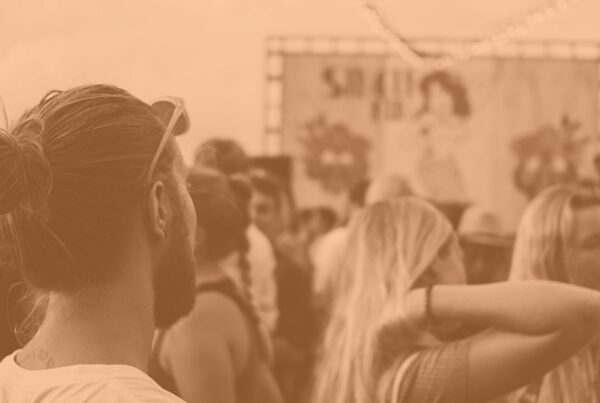It’s time we talk about webinar fatigue. Because as the events industry makes its shift to virtual, this issue increases. Many people are home right now, and it’s not uncommon for some to attend several webinars a week. And some even go through several a day! So it’s no wonder attendees are starting to experience this phenomenon of webinar fatigue. After all, there are only so many hours one can sit in front of a screen and consume content before feeling completely exhausted.
But the biggest problem here is that webinar fatigue has the potential to affect our livelihood. Because as event profs, we are now dependent on people wanting to attend these virtual events. So how can we manage this newfound challenge? That’s exactly what the Brew Crew sat down to discuss this week. Our incredible hosts Will Curran, Nick Borelli, and Thuy Diep share their personal experience and insights as to why this is happening and how we can potentially tackle it. So grab your favorite drink and join us!
Click here for the full audio transcription.
Webinar Fatigue: Let’s Start With The Why
“There’s an absurd amount of demand for specific types of content right now”, says Will. “Because we have an industry that has had the opportunity to get on board with some things for over a decade. And now they have no choice but to do it. So they’re all scrambling to figure out how to do it and I guess what I’m speaking about is virtual events as the number one culprit. All the people who have been talking about this for a long time are like, “Oh boy, I could do a webinar every day because I’ve been talking about this for a long time. I’ve got a deck ready to go and I see the pain and I’m in the position to relieve pain.”
“The only problem is that the people that have that kind of content that have been speakers for a long time”, he adds. “And also in the same conversation with all the other noise of the people that are just like, “Even though I’m a florist, I think I need to talk about virtual events right now”. And it’s really challenging to not be fatigued by seeing the word virtual event in the subject line in every email that comes into me right now, present company excluded”.
Poor Performance
“Not only in just repeating content but also just really poor presentation performance too”, says Nick. “I think I’m getting a lot of good feedback on the content too. But a lot of people are saying, “My webinars are really, really good,” and I feel like the difference in my webinars has been my energy level. I skyrocketed to like a thousand and I feel like people are just like, “Wow, oh my gosh. This is like a breath of fresh air. Someone who’s like this”.
“I’ve seen a lot of people who are not presenters talking about a topic that they kind of know a little bit about. Because they have to talk about this, it is the only way to get people’s attention because of the pain. And you’re five steps ahead, but you’re also in an industry where there are 10 million other people doing low rent versions of what you’re doing and I’m sorry about that”, adds Will.
Thuy agrees and adds that “it goes back to you can be an expert but it doesn’t mean you’re a speaker or you can really engage and really captivate and alter someone’s thinking. I’m disappointed in our industry because even though we’re going into webinars you can still be creative in how you go about presenting that content”.
Learning & Pivoting
One of the biggest mistakes planners can incur is failing to take the lessons they learned from in-person events and failing to apply them to the new paradigm. This inevitably leads to webinar fatigue. “All the things that we have been doing and progress we’ve made in designing events over the last 15 or 20 years, we’re not applying any of those skills to virtual event design”, Nick explains.
“People need that level of engagement and feed off of that for it not to just to be content written off of a cue card as meetings were in the nineties. We’ve learned that lesson. We’ve applied it to face-to-face, but we just ignored that lesson of virtual. And I think that’s because there’s so much really quick pivoting happening by a mass amount of people that have had opportunities to do it before this that just haven’t and now they’re forced to and it’s a lot of half measures and it’s a lot of lower Maslov’s hierarchy of needs stuff”, he adds.
Drawing From Experience
Will and Nick have a lot of experience in webinar hosting. So they can give some incredible tips to combat webinar fatigue. Nick, for instance, has added to his MPI course “some design breaks and some active engagement. And Q&A is realized really well in it. But still, the fatigue of that I’m well aware of. So I think that timing is a big component as well. I think we can do a lot of 15-minute webinars that no one does. Will’s Whiteboard Wednesdays are a great example of a micro-content that delivers on the promise of “At the end of this you will know a thing.”
Nick goes on to add that “it’s built into the design to be able to take real-life examples and extrapolate on those. So I’ll ask open-ended questions. I’ll come up with a way that they could be engaged. So in the design of it, there is a little bit of jazz and a little bit of making it up at the moment. And that I think breaks up the idea of just reading it out loud. I know that’s one tool I’ve been doing. Real-world examples integrated into the content”.
Tips For Audience Members
“As an audience member, if it’s not good within the first 15 minutes, leave”, says Will. “I would rather see that feedback. No one’s forcing you to put yourself through that misery. And honestly, if I saw that my webinar was not engaging and I saw my attendee numbers start dropping rapidly, I would know I need to fix something. And then the other tip I’ll have with that one is decide which webinars are fine for you to watch post-recording too”.
“If you’re like, “This is good information, but I know the speaker is probably not going to be engaging. I just need to get it and it’s also not time-sensitive that I know this right now.” Then just watch it in the recording. Because then here’s the best part. If you really don’t like the recording, you can skip sections or whatever it may be. And you’re not wasting your time blocking out that time, he adds.
Be Mindful Of Your Topics
What you’ll talk about can also dictate the level of webinar fatigue attendees will experience. As Nick explains, “as a consumer of webinars for me, once I get like the broad strokes on certain contents, I’m trying not to find a lot of the same information. Unless it’s like really, really topical, and like some variation on the bend. So I think that what webinar people need to do is really have more evocative titles. And a little bit gutsier on what they’re going to talk about. Especially in this busier climate”.
“To me as a presenter, webinars aren’t nearly as enjoyable or as enriching as talking to people face-to-face”, he adds. “Because I can lock in on emotions. I know what people are going through. So I think some kind of temperature taking of the things beyond just the content. How are you feeling when I tell you this? And asking those kinds of questions might, as a presenter, make you feel like you’re actually in a room with other people. Or there are people there and you’re not looking at a wall”.
Breaking Webinar Fatigue
“I want to try to use my words well here. The experience of giving out what I’m saying isn’t enriching or fun. For me, the enrichment and fun come from seeing the impact that will have. What I’m training people on is resonating. But in speaking to people face-to-face, I get a constant feedback loop of seeing the “aha” moments, seeing the “oh okay”. And it is very powerful for a presenter to be able to feed off of that and I don’t have it as a webinar and that’s why webinars often suck”, says Nick.
Will has some tips to help Nick and everyone combating webinar fatigue. “So one of the things I try to do is to encourage everybody initially just to utilize the platform. And get really engaged in the chat. So one of the things I’ll do is I’ll pose a question and get people discussing. And I just try to encourage as much feedback as possible by saying things like “If you agree with this, give me a one in the chat”. Or “Raise your hand in the chat,” and I try to pose them to give them “Say, here’s how you respond to this,” and then as you start to have people posting in the chat more and more and more, they will eventually just let loose”.
Understanding And Relating To The Audience
“You can shotgun a million ideas off to people. But there’s really no impact of it because it’s not sticky enough in order to actually latch onto people’s minds. The steak and the sizzle are one thing. You can’t divorce one from the other. You have to have a combination of both. Otherwise it’s just meats. It’s just a protein you put in your body because you have to or you’ll die. To be a steak you have to have the sizzle, you have to have the smell, you have to have the experience or who cares? The ideas are cheap”, says Nick.
He recalls a unique moment that involved a rap about Tiger King. “You have to understand emotions in people and understand your audience. And I think what that specific thing showed me was that this webinar fatigue thing is real. Because the things that were not done in other webinars absolutely made people go crazy. And again, if this was face-to-face, I don’t know if it would have. I’ve been a part of a lot of different pitch competitions and I’ve seen high energy pitches. I’ve seen cool different presentation styles, I’ve probably seen raps before. But in the virtual environment those things were so, so much disproportionately resonating that I’m like “People really are absolutely starving for something better.”
Don’t Go Overboard!
Be mindful of the current landscape of things and how that can impact webinar fatigue too. “I think that the webinar fatigue we’re having is we are in the driver’s seat to make a change. It’s just where we’re at right now and again it’s just an absolute need and a lot of people catching up”, says Nick. “But if you were to space it out, it would probably resonate a little bit more and you’d probably have a more varied take on other impacts that have a knock-on effect to even the events industry itself. If you go out and check out marketing-related webinars or sales related webinars or business-related or whatever else that would still have an impact on what you do”.
“That actually is verified by science”, adds Thuy. “Because I’m in that Yale online course, the science of wellbeing. And if you savor and if you drag on the thing that you like the most with breaks in between, you actually are happier. Because you start getting used to it if you just continuously listen. But if there’s a big break in it you’re like, “Well I’m just disrupted and now back to back to this and I still enjoy it”. Versus it being a drag or I feel like I have to listen to this. It’s starting to become a burden. We don’t want that. We want it to still be like, “Yes I’m motivated to learn or to network or whatever the case may be”.
Conclusions
And that’s a wrap on this week’s edition of the Event Brew! Webinar fatigue can pose a very high risk for virtual events. But if you know how to navigate it and work with the right people, there’s no reason to fear it. Put this new knowledge to the test while you wait for another episode. We’ll be waiting for you next week for another awesome brewing session!












